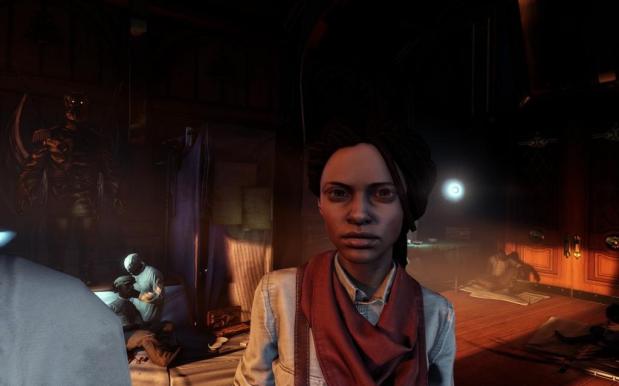
The box art for Bioshock Infinite. Mafe brings this up as an example of how the game initially emphasizes a particular presentation of white masculinity and violence, never hinting at the racial issues that are a core part of the game’s narrative.
In Race and the First-Person Shooter: Challenging the Video Gamer in Bioshock Infinite, Diana Adesola Mafe argues that Bioshock Infinite uses the hegemonic trappings of the first-person shooter (FPS) videogame to initiate critical discussions about race. Mafe frames her discussion of race in two ways. First, how race is embodied, such as the type of avatar the player inhabits. Second, in how it is experienced, in terms of how the narrative and world-construction come together to highlight the main issues in the story. Mafe contrasts her point of view with that of games scholar Espen Aarseth, who argues that focusing on the appearance of videogame avatars is a distraction from good narrative critique. She disagrees and sees embodiment and narrative experience as essential to undertaking a critical discussion of race in videogames.
Hegemony is the crucial power relationship she uses to frame her discussion of race. She quotes Raymond Williams who defines hegemony as “a particular way of seeing the world and human nature and relationships.” She also draws on Toni Morrison’s metaphor of the fishbowl to draw out this discussion of racial hegemony. Much like the hegemony, the fishbowl is “invisible” but “contains” and “contextualizes” the world and how you view it. The player embodies the hegemonic perspective of Booker DeWitt — the typical white, masculine hero found in most FPS videogames. From this point of view, it would initially seem impossible for Bioshock Infinite to be able to perform any kind of substantial critique. However, Mafe argues that the game simply uses this as a device to force the player to notice race and question their own beliefs and assumptions. As Booker, you’re not initially threatened by Columbia, a floating, religious city that seems idyllic and peaceful. However, the appearance of white nationalist propaganda, and whispers about racialized “others” begin to unravel the illusion, until you are engaged in bloody battles with Columbia’s police forces, who proudly proclaim that they are “Protecting Our Race.”

The disturbing white supremacist slogan of Columbia’s police forces.
This leads to the primary takeaway of the article: Bioshock Infinite uses its hegemonic framing in narrative and gameplay to bring more awareness of racial issues to the player. Mafe argues: “Bioshock Infinite features constructions of race and an overarching nationalist narrative that challenges gamers to think critically about hegemonic power structures.” For Mafe, Bioshock Infinite is at the intersection of games as entertainment and education, using its initial promise as a fun, thrilling action game to bring the player into a much more serious realm of discussion and critique. She highlights several scenes in the game that do this: the tour through the headquarters of the KKK-like Order of the Raven; the lottery where the player is asked to throw a baseball at an interracial couple; and the museum tour depicting grotesque racial caricatures of Native Americans and Chinese Boxers. She also sees your interactions with Daisy Fitzroy, the black female leader of the Vox Populi resistance movement is another crucial part of understanding the racial issues at the heart of the game’s narrative. For Mafe, these obvious but necessary interventions are what make Bioshock Infinite unique. She acknowledges that Bioshock Infinite isn’t perfect especially in how it mishandles the end of Daisy Fitzroy’s storyline. However, for Mafe, the issues highlighted in Bioshock Infinite are proof that videogames have the potential to force players to think critically about race and racism.

Daisy Fitzroy, leader of the Vox Populi resistance movement. The player’s interactions with her are a crucial part of the game’s framing of racial issues.
Reblogged this on Diana Adesola Mafe.
LikeLike